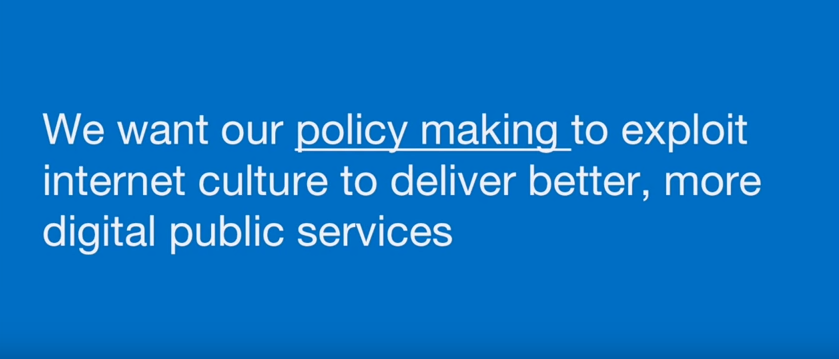
It’s one thing to run a pitch, compare proposals, pick one, and turn down the others. It’s sometimes hard on the losers, but people know where they stand: they tried, they didn’t get it.
But sometimes it’s not as clear cut as that. Sometimes, you’re not quite sure what you want to buy, you chat to a potential supplier, they send you a proposal of some kind, you ponder it, things get busy or the landscape changes, and the timing isn’t right to take it forward. Or maybe you’re crystal clear what you want, you get proposals in, and the wheels come off when the boss changes, or the budget’s frozen, or the procurement department get involved. Either way, the glorious battle of the pitch ends not with a bang, but a lingering whimper, as I was reminded of by a crisp little post from a former colleague which randomly re-appeared in my Reader today:
Just as I’d given up on the piece of work that had looked so promising back in September, it comes back to haunt me. They still want to work with us (and so they should, we’re great) they just need to sort out the incumbent agency and re-draw the spec. But they LOVE the proposal so could we just bear with them until, maybe, November? So the waiting continues. And while I’d love to affect a blithe indifference, I really, really can’t.
I’ve been on all sides of this unhappy situation – as a supplier, a commissioner and a middle-man. It’s awkward, and leads to dodged phone calls and unreturned emails and all manner of bad feeling and chasing. It’s annoying on the supplier end too for obvious reasons: maybe they thought the deal just needed rubber-stamping, or their commercial director was counting on it to meet a quarterly target.
So if you’re on the buying side of the equation, here’s five strategies for killing off a brief in ways which minimise the collective gnashing of teeth (n.b. if this reads like a pissed-off supplier, I’m really not, and I didn’t mean it to come across that way…):
- Before you start, make sure both sides are clear about the difference between a speculative enquiry and a formal request for proposal: don’t confuse a chat about ballpark costs and potential strategies with a request for a fully-costed approach which takes a big investment of staff time. Writing it down in an email is a good idea.
- Writing it down is really important: a verbal brief, from the supplier perspective, is often a PITA. It means all you have to go on are your notes, often based on a stream-of-consciousness conversation with a potential client. If you need to pass it on to a colleague to write up, Chinese whispers come into play. So if you’re buying something, spend 10 minutes jotting down an email with at least (i) a one sentence description of your goal; (ii) a list of the constraints that apply, including time, politics and budget if relevant. Thinking it through in your own head by writing it down really helps refine an idea.
- When things get stuck, don’t be afraid to say ‘I don’t know’, and proactively: if for some reason the project gets stuck, it’s better to be honest and communicative than definitive and evasive. Answer the phone, send a holding response to the chasing email (or before it arrives) – don’t pretend there’s certainty or likelihood where there isn’t.
- Be frank about your enthusiasm for the idea and the proposal: sometimes the proposal that materialises from a chat, or even a more formal brief, isn’t quite what you had in mind… but there’s not a simple yes/no decision to be made. Be blunt with your suppliers. Suppliers crave more detailed, first-hand feedback from clients on proposals (especially the unsuccessful ones), because they so rarely get it. If the proposal missed the point, rubbed you up the wrong way, was too expensive, or if on reflection the proposal showed your brief was a hare-brained scheme in the first place, tell them (probably easiest and safest in a phone call).
- Control the next steps: give negative feedback to some sales guys and they turn defensive (‘Well you never said…’), desperate (‘But we can do that! Give us a chance!’) or annoyingly determined (‘I’ll call you again next week…’), and nobody wants those kind of phone calls. Be very clear what you, as the buyer, want next. ‘Thanks. It’s great to know what you can do. Put me on your mailing list, and I’ll circulate your spec sheet to colleagues in case they can use you’ or maybe ‘I appreciate the effort you went to. The project is pretty much dead now, even though I wish it wasn’t. I will be in touch if it comes back to life’. Don’t call me, I’ll call you.
Note that I didn’t suggest producing a 3 page evaluation matrix so you’re able to give people a post-procurement letter which says they scored 74 out of 100 and thus didn’t win the work. That kind of thing wastes everyone’s time, often out of a desire to cover arses. Similarly, I didn’t suggest writing a 53 page brief (seriously, I’ve had those), asking for everything from TUPE compliance to estimated taxi costs. Volume of briefing material isn’t what’s useful, clarity is. Suppliers don’t read long documents, just like you don’t. Give them a 3 page document that really nails what you’re looking for and the constraints on delivering it, and you’re much more likely to get the proposals you want.
There’s more than a blog post’s-worth of material about what’s wrong with procurement, but you can make it a whole lot less painful by being clear & concise, being a communicative human being, and staying in control.
Photo credit: Mark Van Laere on Flickr
